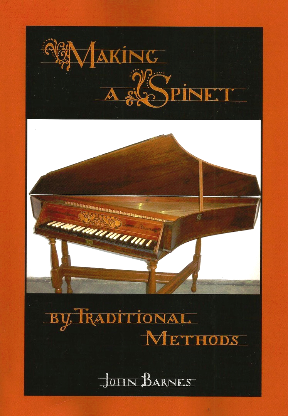
Some General Points
A few general points first. For an amateur builder, making an English Spinet is probably an ideal project: There are no particular complications, and if carefully made, the instrument is likely to sound well, and spinets are also reasonably compact, manageable, and reliable.
Whatever you do, and even if you have no intention of ever making a spinet, please do try to get a copy of John Barnes' excellent little booklet 'Making a Spinet by Traditional Methods'. If you read this, then any of the plans mentioned below will make perfect sense. At the time of writing, Abe Books and Amazon had copies available.
For many of us, space is something of an issue. I would love a nice big workshop, but my very best friend has pointed out that if I had one, I would just fill it up with more instruments.
We must have a home to accommodate the finished instrument, of course, but most of the construction can take place in that location. It is also useful to have a place - let's call it a 'workshop' where the messy and dusty things like sawing and planing can be done, but much of this (certainly for the bigger pieces) can be done out-0f-doors if necessary. I have a small workshop where my saws and other tools live, but I had to wait for reasonable weather to assemble the main carcase, and to finish lids, etc. It is here that one of the advantages of a spinet becomes clear - it is small enough and light enough for one person to move about easily. Square pianos are heavy, and harpsichords are big!

